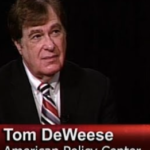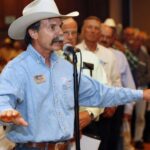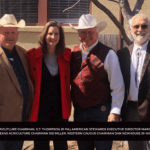The Associated Press misreported this morning that “The USDA Abandons Stalled Animal ID Program.” A press release issued last Friday by the USDA hints at another fate.
Agriculture Secretary Vilsack announced that USDA will develop a new, flexible framework for animal disease traceability in the United States, and undertake several other actions to further strengthen its disease prevention and response capabilities.
Did you understand that statement? The USDA, after a 15 city listening tour last summer, has decided listening is highly overrated. They seemed to understand, acknowledging hearing “a wide variety of comments during the listening tour.”
A document on USDA web site said, “Some people were in favor of NAIS, but the vast majority of participants were highly critical of the program. Some of the concerns and criticisms raised included confidentiality, liability, cost, privacy, and religion. There were also concerns about NAIS being the wrong priority for USDA, that the system benefits only large-scale producers, and that NAIS is unnecessary because existing animal identification systems are sufficient.”
So they’re trying to re-invent the program, make it more palatable to people who signaled their willingness to stand at the farm gate, armed and dangerous, to prevent any part of a government mandated NAIS from creeping into their business.
If the USDA has trouble reading the tea leaves, let Lorrie Morgan explain it to you.
To be more specific, USDA Secretary Tom Vilsack said, “After concluding our listening tour on the National Animal Identification System in 15 cities across the country, receiving thousands of comments from the public and input from States, Tribal Nations, industry groups, and representatives for small and organic farmers, it is apparent that a new strategy for animal disease traceability is needed. I’ve decided to revise the prior policy and offer a new approach to animal disease traceability with changes that respond directly to the feedback we heard.”
What part of no don’t you understand?
The feedback he was talking about was clear, painfully so. Excruciatingly obvious. As plain as the nose on an anteater’s face.
It was “No. Not now. Not ever.”
Most every small farmer and rancher responded with the kind of “cold, dead fingers” response that would gladden the heart of Charlton Heston. Not to repeat myself but I attended two listening sessions; Jeff City and Omaha. The one lone pro-NAIS speaker in Jeff City never finished his spiel. Fearing for his safety, he fled a very hostile audience in mid-speech. The Omaha crowd wasn’t nearly as angry but their message was the same.
It was “No. Not now. Not ever.”
But an ever optimistic Vilsack announced these basic tenets of an ‘improved’ animal disease traceability program. The new plan will –
* Only apply to animals moved in interstate commerce;
* Be administered by the States and Tribal Nations to provide more flexibility;
* Encourage the use of lower-cost technology; and
* Be implemented transparently through federal regulations and the full rulemaking process.
“One of my main goals for this new approach is to build a collaborative process for shaping and implementing our framework for animal disease traceability,” said Vilsack. “We are committed to working in partnership with States, Tribal Nations and industry in the coming months to address many of the details of this framework, and giving ample opportunity for farmers and ranchers and the public to provide us with continued input through this process.”
May I call on Lorrie Morgan, again?
The USDA will convene a forum with animal health leaders for the States and Tribal Nations to initiate a dialogue about ‘possible ways of achieving the flexible, coordinated approach to animal disease traceability we envision.’ Let’s hope they invite all the stakeholders and be prepared to duck and cover.
Chuck Jolley is a free lance writer, based in Kansas City, who covers a wide range of ag industry topics for Cattlenetwork.com and Agnetwork.com.



